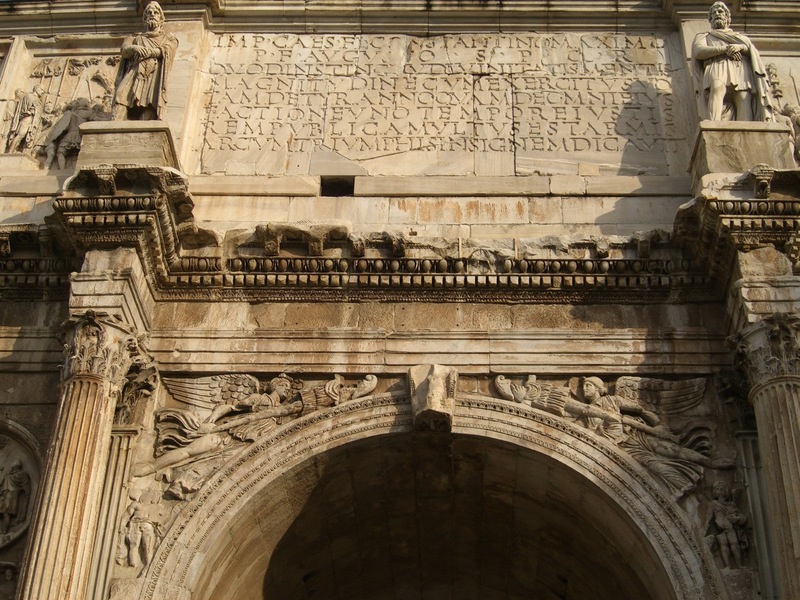Spoliation
A patchwork of statues and scenes that originally appeared on other monuments - some salvaged, and some perhaps stolen - make up the Arch for Constantine. The scarcity of marble at the time of its construction in 315 CE meant that architects built even the flat plane of marble of the inscription out of visibly distinct blocks of spoliated marble.
The Arch represents not just physical spoliation of rare marble but also an ideological recycling and reception of earlier monuments and ideas. Links to other emperors emphasized Constantine’s and the Empire's legitimacy and greatness. The monument is as fragmentary as human memory1 – its creators condensed an idealized Constantinian narrative into a collection of snapshots which, when viewed together, could be experienced by ancient viewers as a powerful meeting of past, present, and future.2
1. Jessica Hughes, "Memory and the Roman Viewer: Looking at the Arch of Constantine," in Memoria Romana: Memory in Rome and Rome in Memory, ed. Karl Galinsky (Rome: American Academy in Rome, 2014), 103.
2. Marina Prusac, "The Arch of Constantine: Continuity and Commemoration through Reuse," in Recycling Rome, eds. Turid Karlsen Seim and Marina Prusac (Roma: Scienze e lettere, 2012), 127.
